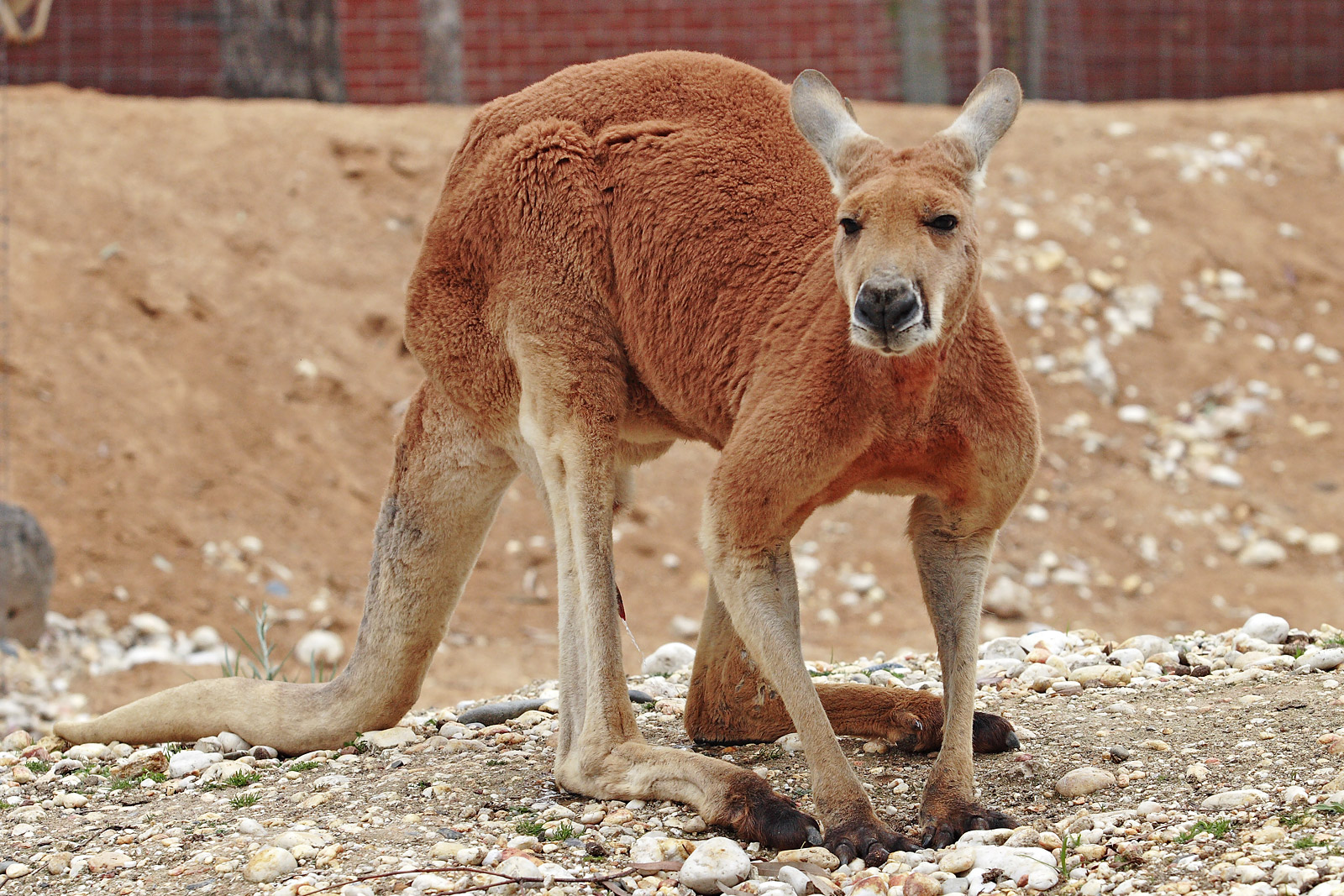
Red kangaroo(Macropus rufus)
Phylum —chordata
Class — mammalia
Order — diprotodontia
Family — macropodidae
Genus – macropus
Appearance
Macropus rufus is the largest living marsupial. Males range in total body length from 1,300 to 1,600 mm and females from 850 to 1,050 mm. Tail length is from 1,000 to 1,200 mm for males and 650 to 850 mm for females. They may weigh as much as 90 kg and may reach 1.8 meters in height when standing.
Coat color is usually reddish brown in males and bluish gray in females, although these colors are reversed in some areas, with females being reddish and males blue-gray. Red kangaroos are robustly built, with large, well-muscled tails and powerful hindquarters. The tail is strong enough to support the kangaroo's body weight, acts as a balance when jumping, and is used, with the two legs, to form a tripod for resting.
Habitat
The Red kangaroo inhabits the arid regions of Australia's mainland, except the extreme north and extreme southwest of the country, and the east coast.
Behavior
Red kangaroos gather in small groups of about 10, called "mobs." The groups are mainly made up of females and their young, with one or a few males. Females stay within the mob they were born in. Occasionally, huge numbers of these kangaroos congregate where there is excellent forage, sometimes up to 1,500 individuals. They are mostly active at twilight and during the night, resting during the day in the shade - but they sometimes move around during the day. They spend most of their active period grazing. When grazing in a group they are always looking out for danger and they warn others by stamping their feet. At this sign, young joeys will hop back into the pouch of their mother for safety. As with most kangaroo species, they stay within a fairly well-defined home range.
Diet
Red kangaroos eat only plants, preferring green herbage, such as dicotyledonous flowering plants and grasses. They can go for long periods without water by eating succulent plants that are filled with moisture.
Reproduction
Red kangaroos are polygynous animals, males competing for mating opportunities with several females. They will try to have exclusive access to several females, actively driving away other males. Such competition sometimes results in "boxing" matches, when males hit at one another using their forepaws, and kick out with their feet. The breeding season is year-round if conditions are favorable. Females give birth usually to a single young, following a gestation period of about 32 to 34 days. When born, the joey climbs its way up through its mother's fur and into her pouch, where it remains, attached to a teat for 70 days. It first puts its head out of the pouch after 150 days, coming out for short periods after 190 days. A female lactate for about a year, carrying her joey in her pouch for around 235 days. Red kangaroos are sexually mature at 2 - 3 years old.
Lifespans are potentially long in Red kangaroos, although most individuals probably do not survive their first year of life. Red kangaroos have been recorded living up to 22 years in the wild.
Incaptivity
To keep kangaroos, you need to build a spacious aviary with a small insulated house.
It is necessary to have a house as it is a shelter from the rain, wind and cold. In winter you can hang a mirror lamp so the temperature is not too low, but you needn’t do it in mild winters –what matters is that the house must be dry because a thick layer of hay and sawdust will provide a dry and warm floor for animals` legs. They wander through the snow, hiding in the house only when they freeze.
Kangaroo`s food in winter is hay, vegetables (carrots, turnips, boiled potatoes), apples, crackers, grain, a certain amount of feed, and in summer - grass with periodic addition of grain and fruit.
It is important to remember that kangaroos are shy animals. In any case, do not let the dogs, which can chase the animals, stay near them - in a panic the kangaroos can crash into the encountered obstacle. Therefore, introduce your animals to other pets gradually, do not force events.
Kangaroos can live alone, but ideally have a couple – a male and a female, or even a group of 1 male and 2-3 females.
 Russian
Russian
 English
English


















